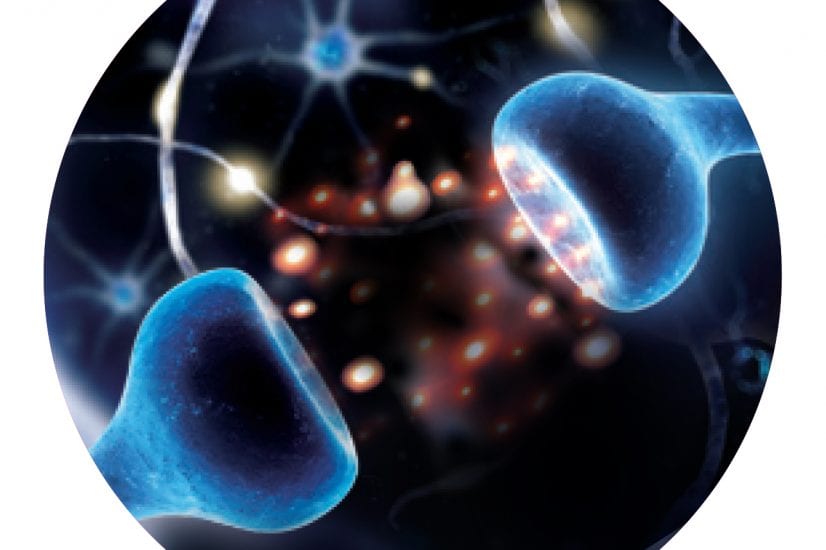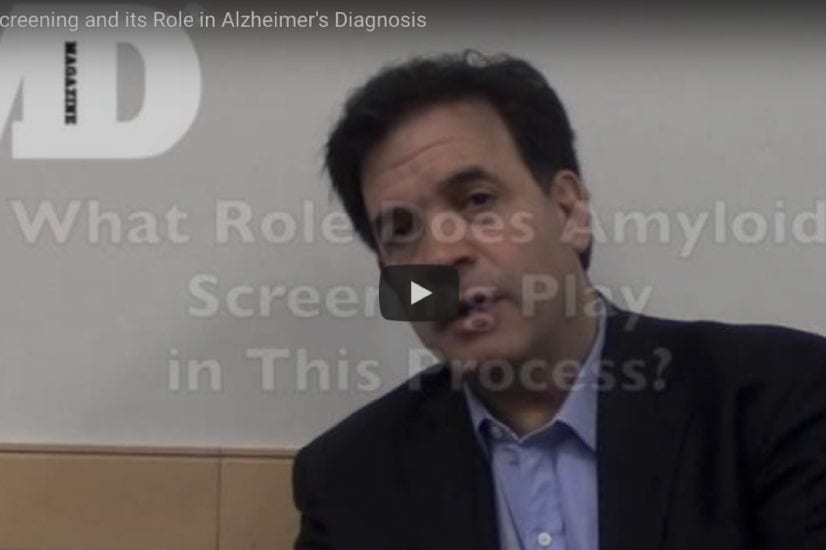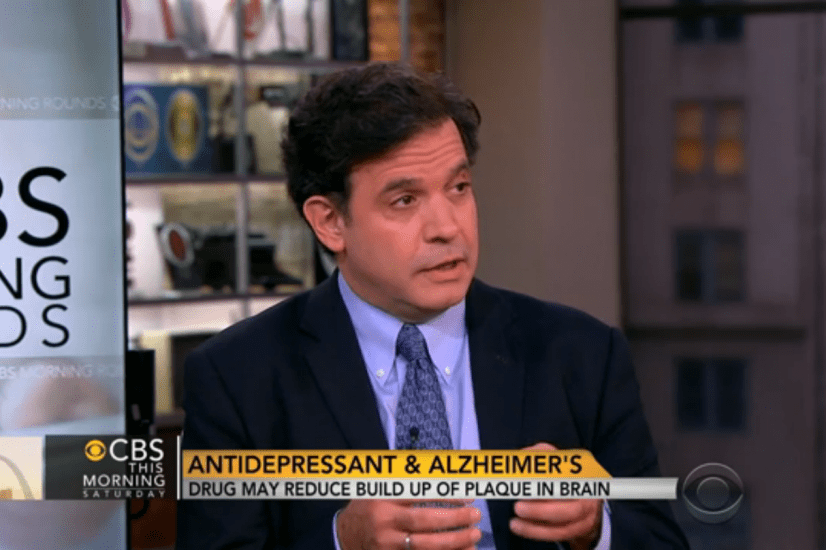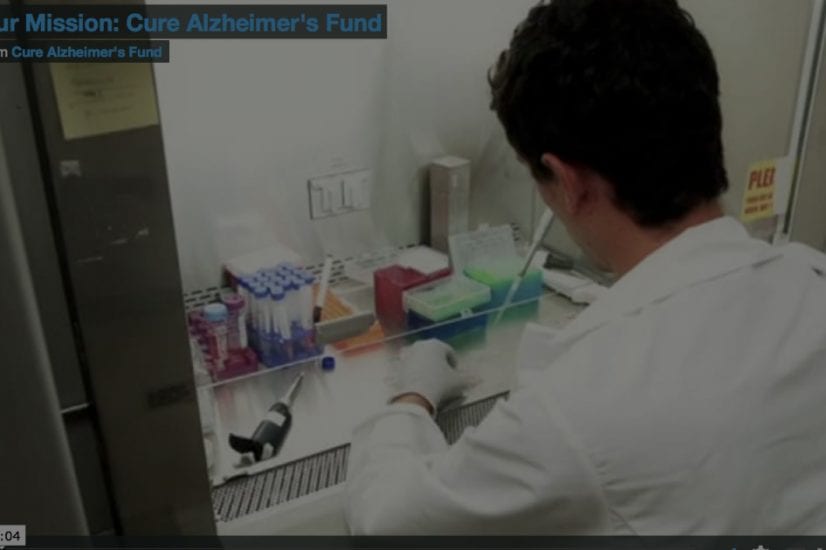While many were anxious to accept initial findings showing a drug known as Targretin’s “too good to be true” lab results with Alzheimer’s disease, subsequent attempts to confirm and replicate the original data regarding the ability of Targretin to remove amyloid plaques, the cardinal lesion of the disease, have largely failed. Cure Alzheimer’s Fund Research Consortium members Dr. Sangram Sisodia, professor of neuroscience at the University of Chicago and Dr. Robert Vassar, professor of cell and microbiology at Northwestern University along with several other groups have completed revealing new research which contradicts earlier claims for relief of Alzheimer’s symptoms and the hopeful promise of a new effective Alzheimer’s therapy.
Targretin’s story began in early 2011 when Dr. Gary Landreth of Case Western Reserve shared startling lab results with Alzheimer’s research colleagues. His lab shared data that showed extensive and almost immediate clearing of the amyloid beta (Abeta) plaques that are the telltale signature of Alzheimer’s disease, the largest disease among several types of dementia. Cure Alzheimer’s Fund supported a proposal from the Landreth lab in the summer of 2011 to confirm some of the results of the study. In January of 2012, Landreth and colleagues published a paper, essentially with the original findings, in the prestigious journal SCIENCE to great acclaim by the Alzheimer’s research field. At last, it seemed, here was a breakthrough for the over 5 million patients suffering from Alzheimer’s symptoms present in an existing drug, already approved by the FDA that appeared to attack the disease directly and not just the symptoms.
But some researchers remained skeptical. Scientists from Cure Alzheimer’s Fund’s Research Consortium requested more data from the Landreth lab which was forthcoming. Landreth and colleagues suggested that on the basis of the impressive results, a limited human trial be done to begin to assess the efficacy of the drug against Alzheimer’s in human, not just lab mice. Cure Alzheimer’s Fund was interested in participating in that Phase 1 trial, but still had concerns about the original data.
“We were surprised and excited, even stunned when we first saw these results presented at a small conference,” said Sisodia, in a Medical Daily story highlighting his co-authored response to Landreth’s initial findings. “The mechanism of action made some sense, but the assertion that they could reduce the areas of plaque by 50 percent within three days and by 75 percent in two weeks, seemed too good to be true.”
The promise of a potential breakthrough for Alzheimer’s patients was strong enough for Cure Alzheimer’s Fund that it supported an additional study by Sisodia and Robert Vassar of Northwestern University in the spring of 2012 after release of the Landreth paper to try again to confirm the Landreth lab results.
Meanwhile, the media had begun to tell this story and Alzheimer’s patients were eager to try this drug themselves. They implored their doctors to find Targretin for them and prescribe it “off label”. Some did and still are. Some researchers such as Dr. Sam Gandy of Cure Alzheimer’s Fund Research Consortium, Robert Vassar and others urged their colleagues and neurologist not to prescribe this drug until more data was gathered about a) the effectiveness of the drug against Alzheimer’s and b) the nature of side effects of the drug in Alzheimer’s patients which were completely untested.
Today, three reports including Sisodia and Vassar’s co-authored work will be published in Science where Sisodia writes, “There is absolutely no reduction in amyloid levels in the brains of mice treated with this compound.”
Gary Landreth has told Nature, another prestigious science publication: “It was our expectation other people would be able to repeat this… Turns out that wasn’t the case, and we fundamentally don’t understand that.”
What do we learn from this?
- Do not shy away from risk. Landreth and his colleagues are to be applauded for their original insight and attempt to find the much-dreamed of short cut to a cure for Alzheimer’s. Here they had an existing, FDA-approved drug that seemed to work. Wouldn’t that be wonderful? Try it; work it through the lab process to determine how it affects the pathology and then figure out if it is safe to use in this context. Even if it seems like a long-shot, if it can prevent misery and save lives, it’s worth it.
- If it is “too good to be true”, it probably isn’t. Appropriate skepticism is part of the “scientific method” and rigorous follow up for confirmation is absolutely essential. Sharing of data both pre and post publication is critical for this function. Again, the Landreth lab is to be commended for sharing that data with others. But we also look to the originators of the data to be skeptical, too, and to keep confirming their findings in their own labs and in working with others.
- Do not use a drug or compound in humans until the lab and animal data make sense. It is so tempting to move to humans to try to abrogate suffering as fast as possible. And again, this is and FDA approved drug — how bad could it be? But we find, in fact, that not only is its efficacy in question, but the side effects appear to be particularly bad in Alzheimer’s patients. The differences between the original purpose and the “off label” purpose come in dosage to be effective and duration of exposure, all untested in Alzheimer’s patients and before the lab results could be confirmed.
- Go to the root of the problem. The “existing drug” fix would, indeed, solve a lot of problems in finding a “cure” for Alzheimer’s disease. It would obviate years of clinical trials, save millions if not billions of dollars, and provide almost instant effective intervention and perhaps prevention of the disease. HOWEVER, without knowing fundamentally how the drug affects the basic mechanisms of the pathology, its efficacy and safety are in question.
Cure Alzheimer’s Fund believes that we cannot find the cure without understanding the cause. The dementia that is Alzheimer’s is rooted in genetics. The Alzheimer’s Genome Project and its newest phase, the Whole Genome Sequencing Project of Alzheimer’s, co-funded by Cure Alzheimer’s Fund and the National Institutes of Mental Health and led by Dr. Rudy Tanzi of Massachusetts General Hospital and Harvard Medical School and Chairman of Cure Alzheimer’s Fund’s Research Consortium is designed to a) identify all the genes that confer risk or provide prevention for the disease, and b) determine the function of those genes as they relate to Alzheimer’s pathology. Similar studies are underway by others, but the Cure Alzheimer’s Fund project will be the largest private, family-based study of the Alzheimer’s genome in the world.
That is important because without understanding these basics, we risk spending years and billions of dollars “shooting in the dark” to intervene in the disease without knowing quite how it starts and progresses. There have been spectacular failures of promising Alzheimer’s drugs because those drugs were not grounded in the fundamentals of the causes of the disease.
We are getting closer. Alzheimer’s researchers are closer than ever to consensus about the origins of the disease and its biological progression, aided in large part by these genetic studies and the biochemistry of the proteins those genes produce. But we are not quite there yet. There are also promising therapies under development, the more recent ones based on much better understandings of the disease. One example is a “gamma secretase modulator” developed by Steve Wagner of the University of California at San Diego and Rudy Tanzi of Massachusetts General Hospital and Harvard Medical School which will modulate the production of Abeta at its origin to help keep it in proper balance. The approach has been so attractive that the National Institutes of Health has adopted the compound as part of its prestigious “Blueprint” program for fast-tracking promising compounds into drug development.
There are other examples of good, solid therapies now being developed from a much better understanding of the origins of the disease. But again, we do not yet have the kind of working understanding of the origins and progression of the disease that will significantly shorten the time from drug discovery to drug availability.
Until then, we need to keep working hard at understanding those origins and how the pathology plays out and when it plays out. It is becoming increasingly clear that this disease begins much earlier — perhaps decades — than symptoms are exhibited. Therefore we need to find ways not only to interrupt the pathology in those people already affected, but prevent it from starting or progressing in those people at greatest risk. A tall but necessary order.
Finally and again, Cure Alzheimer’s Fund applauds the Landreth lab for its aggressive pursuit of a promising therapy and equally applauds the skepticism and hard work of those who, while wishing it was true, needed to find out for sure.
Tim Armour
President and CEO
Related
Why don’t the drugs work?







